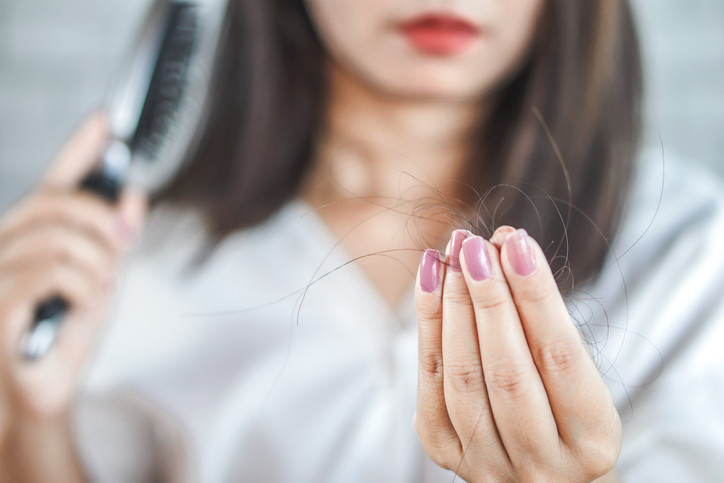Combing your hair only to see hundreds of strands coming out in piles is a dreadful sight. Hair loss can occur at any stage of life due to various reasons that include hormonal imbalance, medical conditions, or because of aging. But no matter what causes it, we want to find a quick and effective solution. PRP for hair loss is a worth-mentioning treatment that has proven an exceptional solution for hair loss. Multiple medications in the market have been used to prevent hair fall and stimulate regrowth, but none have been as effective. Hair fall does not occur overnight, and the best step you should take in this matter is to start treatment at an early stage to stop the issue then and there.
As we age and our body changes, hair fall also occurs. It is a common issue among men and women of all ages. But with aesthetic procedures like PRP for hair loss at our rescue, we can address this issue and expect remarkable results. So what really is this treatment, and how does it work? If you are someone who has tried all medications and cosmetic products to boost hair growth and prevent hair loss, but all went in vain, this blog will help you discover the magic treatment of PRP and the results it can promise.
What is PRP Therapy?
Platelet-rich plasma or PRP is a treatment that treats hair loss and also promotes the regrowth of hair follicles. This therapy is a three-step process that includes drawing a person’s blood, processing it, and injecting it back into the body. Our blood contains plasma and red blood cells. The plasma carries components like white blood cells and platelets, which are rich in growth factors and can help boost the regrowth of hair follicles. Since the treatment uses a person’s own blood, the procedure is not too long and does not require any testing. The platelet-rich plasma improves a person’s blood supply to the hair follicles, preventing hair loss and regenerating hair growth. This procedure helps control hair loss and even promotes hair growth. Another essential aspect that makes this procedure highly useful is its ability to thicken the hair follicles.
The treatment has gained enormous popularity and continues to solve many people’s struggles with hair loss. After taking the blood from a patient, it is put into a centrifuge machine that separates the plasma, red blood cells, and other components. From there, the medical practitioner draws out the PRP and injects it directly into the scalp or the area with thinning hair or bald spots. Since the procedure involves injecting plasma into the scalp, it is minimally invasive but can draw out visible results. The therapy works in multiple sessions, typically three sessions, 4 to 6 weeks apart.
How Does PRP work?
Our hair follicles become inactive with constant hair shedding. This therapy works as a waking agent and encourages the hair follicles to stimulate hair growth and restoration. Since plasma is directly injected into the scalp, the procedure can take up to an hour, depending upon the severity of hair shedding and bald spots on a person’s scalp. Blood plasma separates within 20 minutes and from there, the therapy is quick. Typically the results start gradually as our body gets used to the new plasma that stimulates the hair follicles. Over time, between the sessions, you will notice a significant reduction and decrease in hair fall. However, repeated visits are mandatory, and you need to complete the whole treatment, which usually carries three sessions. Results vary on a variety of factors, including gender and age, and also the severity of hair loss.
The results kick in by visible reduction in hair fall, and over time a patient may begin to experience actual hair regrowth. Despite the time it may take to see hair renewal, the results are promising. Less thinning, a fuller head of hair, and patient satisfaction are indications that PRP therapy is an effective and safe treatment for hair restoration.
Risk Factors of PRP
The risks and side effects of PRP therapy for hair loss are minimal. Since the treatment involves injections, you may have some minor pain, minimal bleeding, or redness around the injection sites. Some patients also report mild headaches, but the symptoms last for only a few hours. These side effects typically resolve within a day. Most patients have no adverse effects.
Who Is The Best Candidate for PRP Therapy?
Individuals with hereditary-type hair loss respond best to PRP therapy. Your doctor is best-suited to help you choose which hair restoration treatment will be most effective based on your type of hair thinning or loss. However, stress-related hair thinning is also just as responsive to this cosmetic treatment. If you’re considering PRP therapy, the first step is to schedule a consultation with a credible dermatologist and get a complete checkup. Cutera Aesthetics is the answer to all of your problems. Professional experts cater to all your needs and handle every patient with utmost care. PRP is an exciting and promising treatment option to combat hair loss that can have a profound impact on your quality of life.




